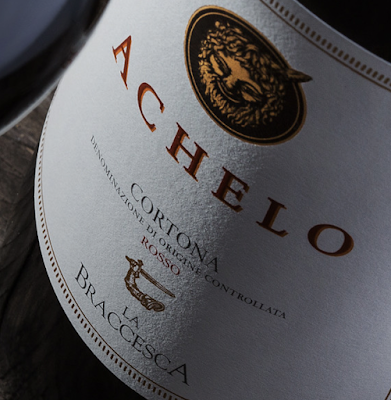Two Heartily Recommended Wines. A Pinot Blanc from Alsace, a Sangiovese from Montepulciano
Meyer-Fonné Pinot Blanc Vieilles Vignes Alsace (AC) 2018, 12.5%
€20.65 64 Wine Dublin, Bradley’s of Cork, Greenman Dublin, Le Caveau Kilkenny
Seductive aromas of pear, peach and almond announce this beautiful pale straw coloured Pinot Blanc from Meyer-Fonné of the Alsace. A touch of sweetness, also on the nose, is found too on the palate, where white fruit, rich and fresh and smoky, is surrounded by a refreshing minerality. Precision, depth, purity all combine here. Delicious and moreish, with a very clean finish, this is Very Highly Recommended. Very good value too by the way.
Wine Folly says it will match up well with soft cheeses, salads with cream dressings and flaky fish (eg cod). Personally, I think it would have not problem with salmon or trout.
Le Caveau: Pinot Blanc Vieilles Vignes comes from a plot of old vines, it acts like Pinot Gris on the nose — rich, oily apricot and pear fruit— but the touch of white pepper and taste of freshly squeezed oranges is classic Pinot Blanc. A house pour at a number of Ireland's Michelin starred restaurants over the past 15 years. A sure fire hit each and every bottle opened.
Félix Meyer himself has come in for high praise.
"Félix Meyer is one of the more ambitious and successful young vignerons of Alsace.” Wine Advocate.
“ ... Félix Meyer still has humility, still has a sense of wonder, and is still capable of self-criticism. He is a seeker and a perfectionist. He is a terroirist, and when he speaks of a granitic soil, the wine in your glass tastes of it.”
Kermit Lynch, US importer.
No chemical fertiliser is used in the running of the vineyard, “only compost we make ourselves using raw materials derived from organic farming. Calcium and magnesian limestone is spread each year on the granitic soil terroirs to prevent acidification.”
Innocenti Rosso di Montepulciano (DOC) 2015, 13.5%,
€19.35 64 Wine Dublin, Bradley’s of Cork, Greenman Dublin, Le Caveau Kilkenny
Light and bright ruby colour. Gloriously aromatic, with cherry and plum to the fore, forest fruits and herbal notes in the mix as well. It is medium to full-bodied; that warm fruit is there, some spice too, a lick of wood, really well balanced. Fine-grained tannins noticeable on a long and very dry finish. With a little more weight than your typical Tuscan red, this is easy-drinking and Very Highly Recommended.
I think we’ve all been confused at one time or another by Montepulciano on an Italian wine bottle. It is the name of a grape and of a town in Italy. According to Wine-Searcher.com the grape was named after the town and was once widely grown there.
Nowadays, the grape has found another home in Abruzzo (Abruzzo is a large area on the east coast), hence Montepulciano d’Abruzzo. In the late 20th and early 21st century, Montepulciano d'Abruzzo earned a reputation as being one of the most widely exported DOC classed wine in Italy (Wikipedia).
Our wine comes from the town of Montepulciano. This is in Tuscany, in the province of Sienna, and is one of the most attractive hill towns in the area.The main grape grown here is Sangiovese. Only the very best grapes are used for Vino Nobile di Montepulciano. The others are used for Rosso di Montepulciano. The Vino Nobile has the big reputation but the simpler Rosso is no mean wine either as our example indicates.
Importers Le Caveau tell this Rosso di Montepulciano is a blend of Sangiovese, Canaiolo Nero and Mammolo grapes.































